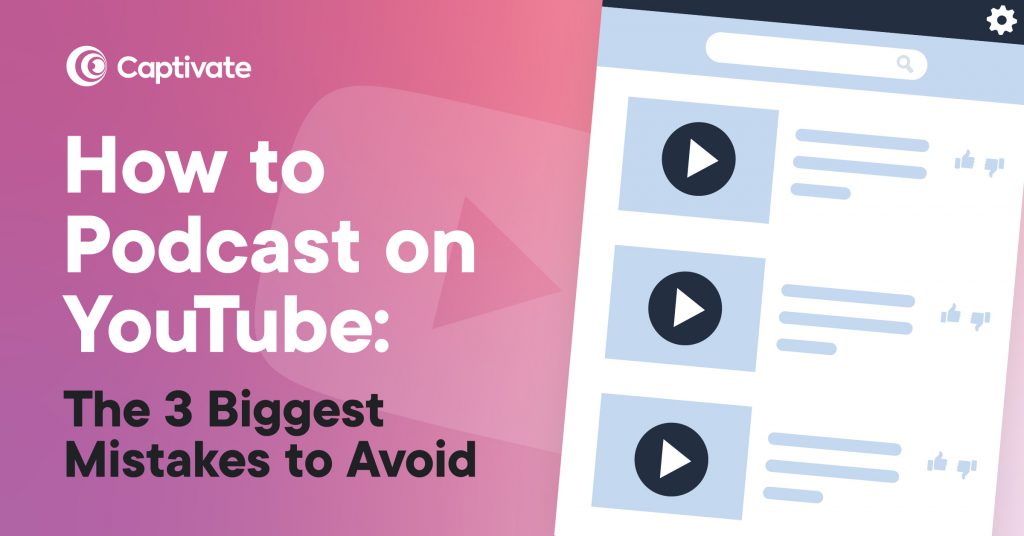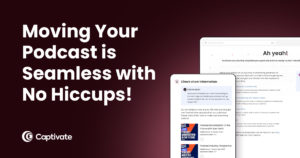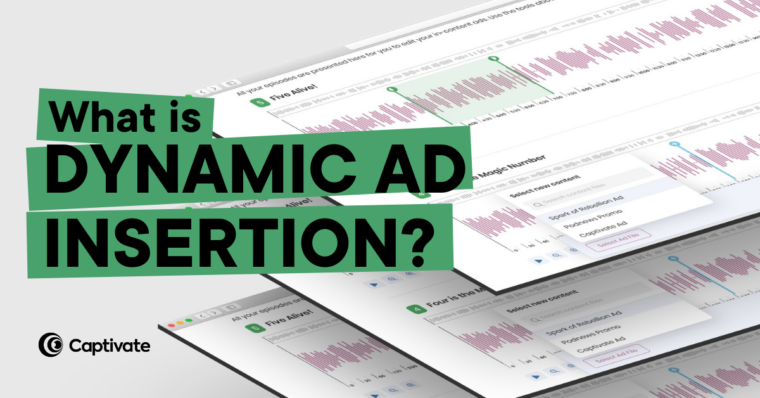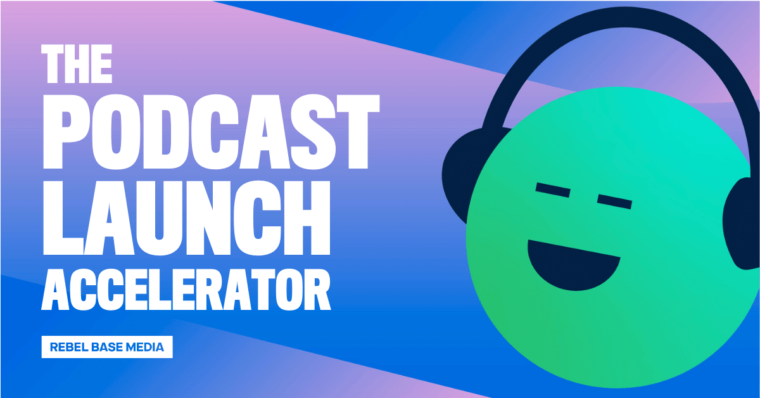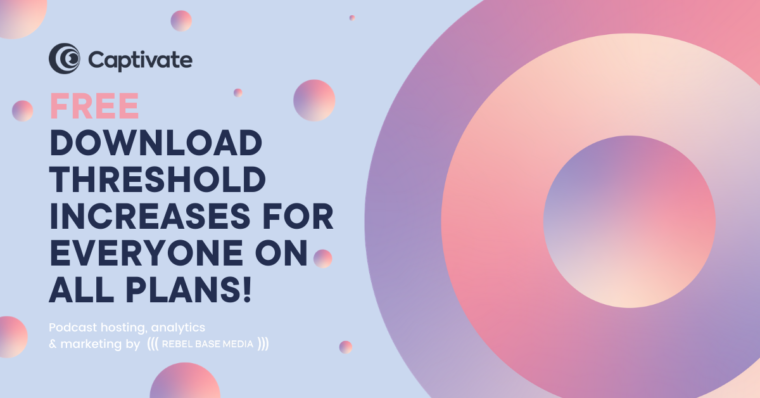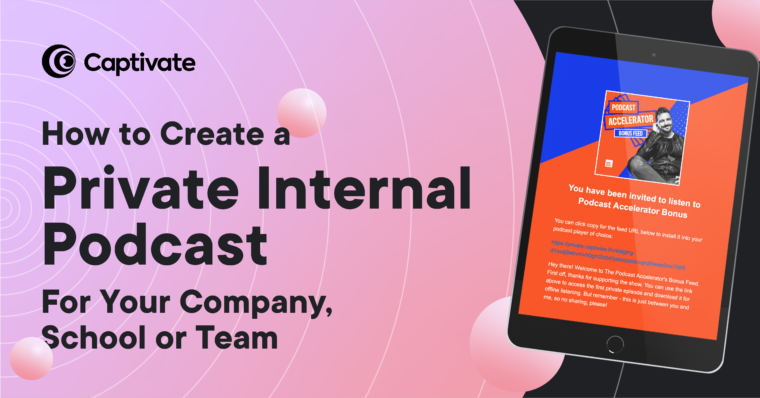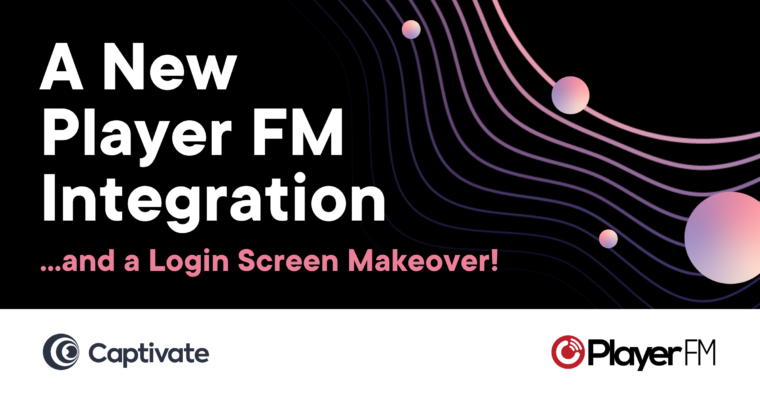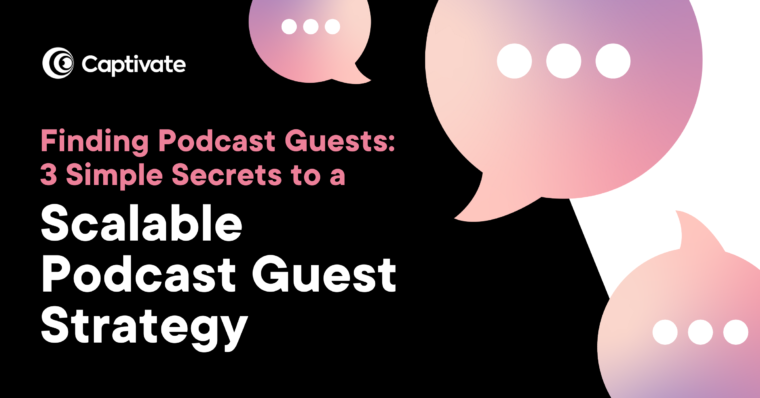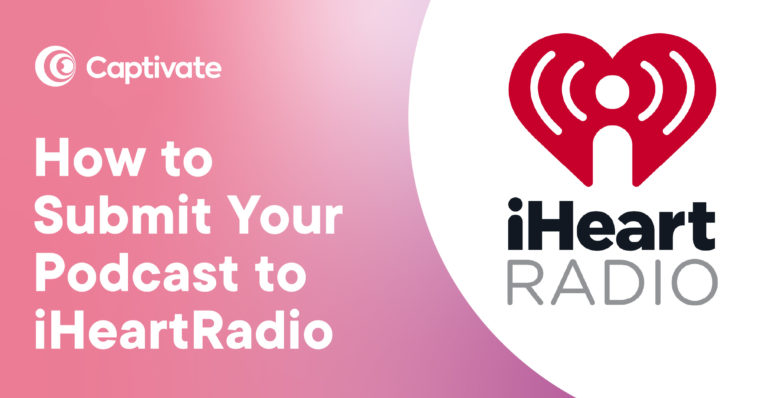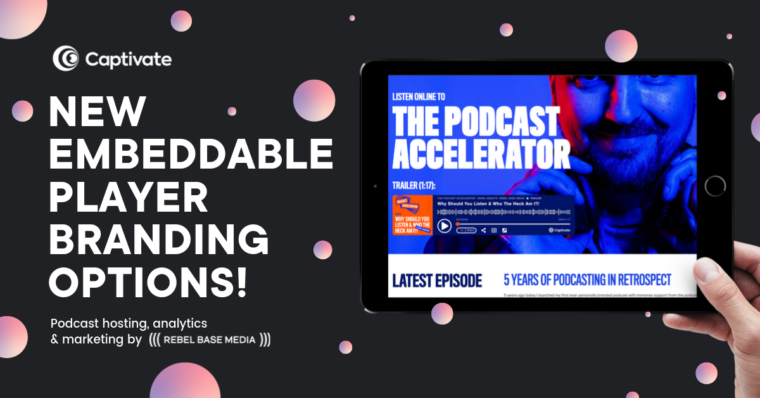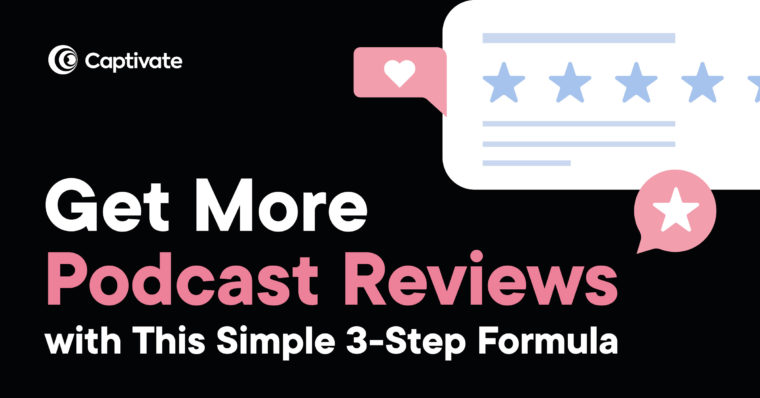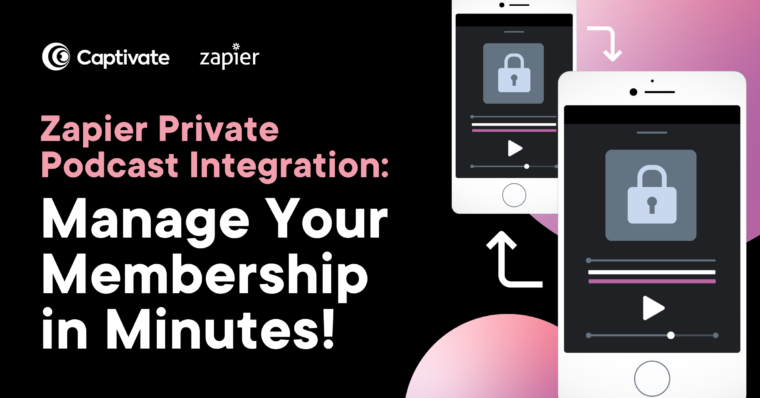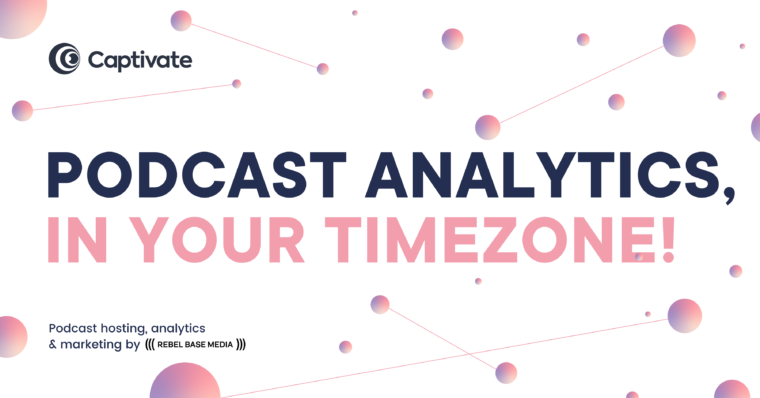Putting your podcast on YouTube is a popular repurposing method for lots of podcasters. There are plenty of benefits to starting a channel, from repurposing your episodes and finding new listeners to building your brand and authority.
Before you put your podcast on YouTube, there are a few vital things you need to know (and things to absolutely avoid) in order to make your channel a success.
Why do we know all this?
Last year, we ran a few trials with CEO Mark’s podcast, The Podcast Accelerator. We wanted to experiment with repurposing the episodes to our YouTube, to see if doing so would help to grow our audience as well as the channel.
After months of testing, tweaking, recording and filming, the results were mixed. But, we learnt a lot about how to produce successful content on YouTube, and how podcasters like you can use video as an effective tool for marketing your podcast and sharing your content with YouTube’s billions of users.
Here is everything we learned about how to podcast on YouTube: the good, the bad and the things that just didn’t work. In this guide, we’ll cover:
- Why YouTube is a powerful channel for promoting your podcast, brand or business
- 3 big mistakes we made, so you can avoid them
- 3 ways to use YouTube to support your podcast, that we know actually work
In this article:
Is It Worth Putting a Podcast on Youtube?
There’s a lot of debate about whether or not you should upload your podcast to YouTube.
Podcasting and YouTube are two entirely different mediums, with different goals, advantages and disadvantages when it comes to content. You won’t see success by approaching them in the same way (we’ll get to that later).
So, instead of asking what the benefits are of repurposing your podcast episodes on YouTube, let’s look at why it’s worth being on the platform in general!
YouTube gives potential listeners another way to find your content

YouTube has over 2+ billion users, which is almost one-third of the Internet. After Google, it’s the second-most powerful search engine in the world.
Just as submitting your podcast to every directory ensures your show is available anywhere your listeners might search for it, producing content for YouTube gives you a further opportunity to capture new listeners. If you’re trying to build a brand or business, and your podcast is just one element in that mix, YouTube will help you reach audiences you wouldn’t have access to with just podcasting.
You can direct your audience on YouTube to your podcast
Good YouTube videos can get you thousands if not millions of views over time. A percentage of these viewers won’t know that your show exists, or even listen to podcasts at all.
Just one well-produced, informative, optimized video can act as a permanent lead magnet for raising awareness and driving interested listeners over to your podcast. YouTube’s channel analytics can even give you insights into your audience you might not know about, helping to strengthen your content and tailor it to win new listeners!
Video content can provide a value-add for your premium subscribers
If you run a premium membership for your podcast, YouTube content is a great perk for paying subscribers who want more access to you and your content. Whether it’s a private live stream once a month, a webinar or bonus face-to-face interviews with your guests, this kind of video content is another way of adding value to your membership.
How to Start a Podcast on Youtube: 3 Big Mistakes to Avoid and What to Do Instead
Publishing video content on YouTube can definitely help to grow your audience. But as a busy podcaster, how can you make sure it’s worth your time before jumping in? Here are 3 big mistakes to avoid.
1. Refrain from auto-publishing your audio
Lots of podcast hosting platforms and publishing tools offer the ability to auto-publish your podcast to YouTube. It’s basically like a long-form audiogram, with your cover art and sometimes an audiowave. It’s an attractive option because it can be automated and you’re covering both your podcast and channel at once.
We did this to get the back catalogue of The Podcast Accelerator over to YouTube. At over 100 episodes, we have a strong archive of content that was and still is a useful resource for independent podcasters.

The trouble was, no matter how good, valuable and useful the content, it wasn’t right for YouTube. Those videos didn’t get many views and didn’t do anything to grow our subscriber base. Most importantly, the content wasn’t connecting with the people it was for – in that format, it didn’t capture attention enough for them to keep watching and engage with each video.
Instead: think about how you can connect with a YouTube audience
YouTube users want very different things from their content, notably: video. A static image or audiogram won’t do anything to hold the attention of someone who is expecting to watch and be entertained by video content.
If you’re thinking seriously about using YouTube to support your podcast, think about how you can connect with viewers and adapt your content to engage and attract them. You could try:
- Repurposing your podcast episodes into video scripts, so that they’re tailored for video and the person watching it.
- Breaking your episode down into segments and using cards to visually separate each section.
- Investing in some lighting (we use colour-changing LEDs) or backdrops to make your video setting attractive and inviting.
- Introducing video-specific effects and edits, such as transitions, animated intro cards and jump cuts.
All these things will help increase your watch duration, which is one of the most influential factors in whether your videos get surfaced or not.
2. Don’t record audio and video simultaneously
Our next experiment with YouTube podcasting was to have Mark record in front of a camera in the studio whilst simultaneously recording the audio version. This approach allowed us to save time and, like auto-publishing, kill two birds with one stone.
Another article we think you’d like...
Reading Time: 3 minutes Wondering how to get your podcast on Amazon Music? Here are all the steps for submitting your podcast to Amazon Music, Audible and Alexa devices.
We didn’t edit the video, or spend time on intro cards or flashy editing. We left in the audio intro, our pre-roll ads, and simply published it directly to YouTube. Whilst the videos performed better than the auto-published ones, this ‘video podcast’ approach still took us a long time to produce and wasn’t getting us the return we were hoping for.
What’s more, we got feedback from viewers who were (rightly) put off by the music intro, ad reads and calls-to-action that weren’t relevant to them.
It became clear to us that repurposing audio to YouTube wasn’t serving our audience, wasn’t helping to achieve our goals and wasn’t good use of our time, either. So, we tried a different, and ultimately successful approach.
Instead… create dedicated videos separate from your podcast
It might sound obvious to say you should create videos specifically for a video platform. It is. But it’s not what a lot of podcasters get told to do.
However, as we’ve seen, auto-publishing and video podcasting is not effective in actually advancing your podcast, brand or content. It doesn’t translate to actual viewers you can engage with and bring over to your podcast.
Instead, focus on producing one well researched, high quality video made specifically for people to watch. Don’t repurpose every single podcast episode – cherry-pick just one episode to turn into its own separate, specific video.
Work with YouTube’s algorithm, not against it, and you’ll be rewarded with evergreen content that will sit permanently on your channel and continue to generate views and traffic even without your input.
3. Don’t expect your YouTube channel to grow on its own
Another mistake to make with podcasting on YouTube is expecting it to give you results without input from you. Like any marketing channel, producing video content takes time, resource, effort and interaction from you to make it grow.
You can’t just throw a video online and expect it to blow up. In order to see success on YouTube, you need to give your videos the same attention and care that you would your podcast episodes, including keyword research, editing and paying attention to the algorithm.
Instead… optimize your videos for your audience and search
YouTube is a powerful search engine. Its algorithm is designed to surface the most relevant and popular content depending on what people search for as well as what your audience likes.
At the beginning, it will be hard to tailor content for a non-existent audience. So, you should use your podcast analytics and audience as a starting point. Ask them what they’d like to watch on your channel and make videos from your 3 most popular episodes.
After you’ve been on the platform for a while, use your YouTube Channel Analytics to find the video(s) that have the most views and highest watch duration. This is the content your YouTube audience likes best and is what you should focus on producing more of.
Just as you would your show notes, make sure to optimize your video so you help YouTube (and Google!) to connect your content with your audience. That means:
- Carefully crafting your descriptions, tags and titles for relevant keywords.
- Including timestamps (or chapter markers) in your descriptions to section up your video and help viewers find what they’re looking for.
- Designing attention-grabbing custom thumbnails that stand out (give your videos curb appeal!).
Recap: How to Podcast on YouTube, the Right Way
By making some mistakes, we learned some clear lessons on how to use YouTube effectively as a means to grow your podcast. Here are some key takeaways:
- YouTube and podcasting are two different mediums. Listeners and viewers want different things from their content and should offer very different experiences.
- Instead of auto-publishing or recording a video podcast, think about how you can attract, engage and add value to a YouTube audience. When that trust is solidified, you can work on converting viewers to podcast listeners.
- Rather than trying to publish one video per podcast episode, focus on creating one quality, considered and optimized video that people will want to watch.
